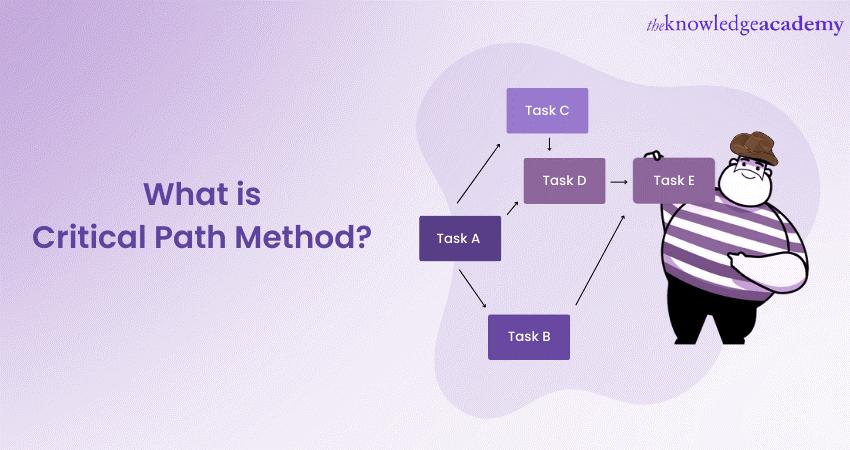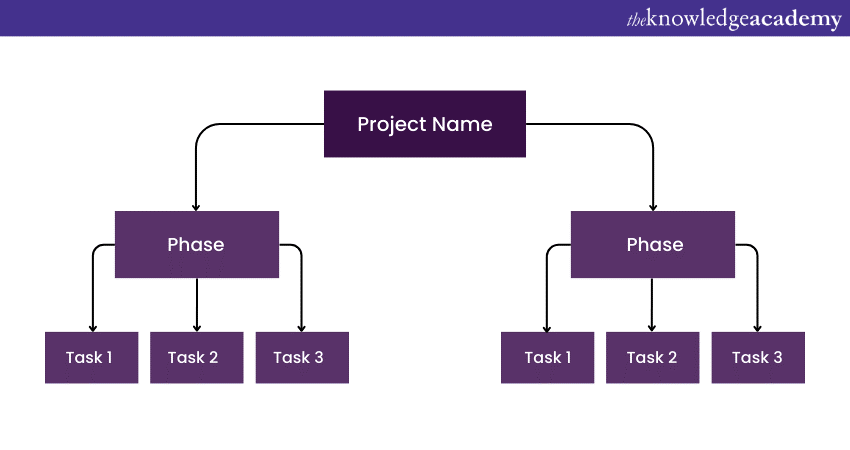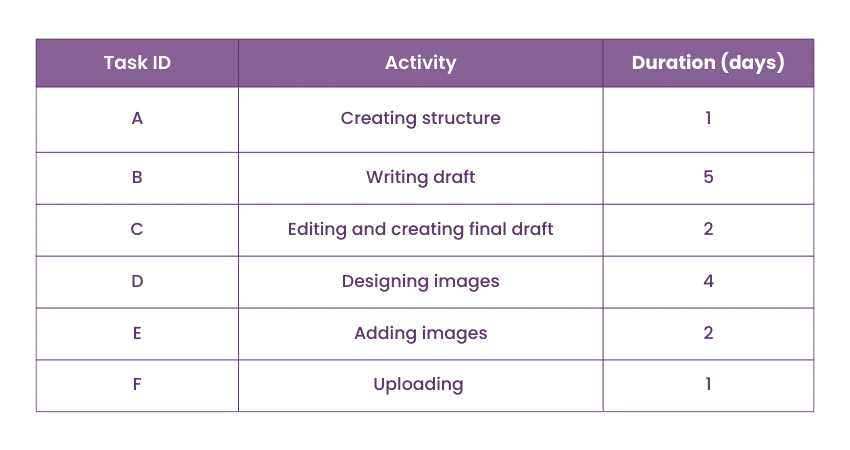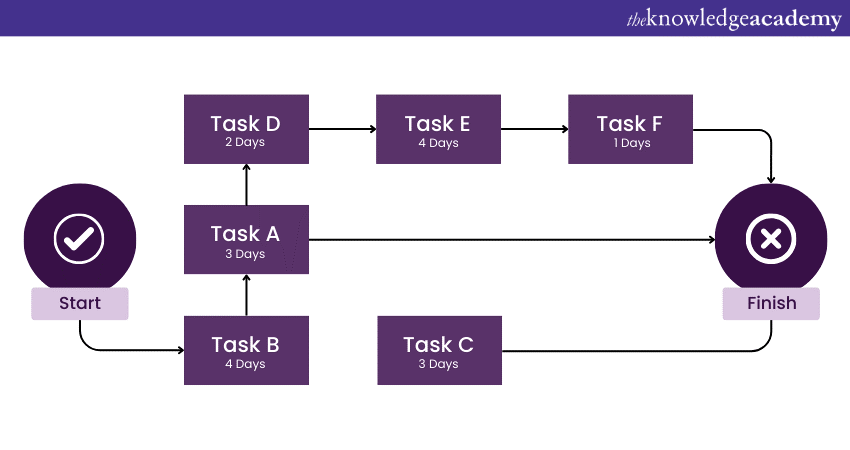We may not have the course you’re looking for. If you enquire or give us a call on +55 8000201623 and speak to our training experts, we may still be able to help with your training requirements.
Training Outcomes Within Your Budget!
We ensure quality, budget-alignment, and timely delivery by our expert instructors.

In a business environment, Project Management is of significant importance. Effective execution of Project Management ensures proper project planning, organising, and management, which is crucial in producing the agreed-upon products or services per customer requirements or achieving a defined goal. This is where Critical Path Method technique comes in. Thus, understanding What is the Critical Path Method becomes important to gain insight into the scope of Project Management.
The Critical Path Method essentially helps identify and implement the crucial tasks necessary to complete a Project. However, if your organisation is unaware of this technique, it is the time you learn about it and drive organisational success. In this blog on understanding What is the Critical Path Method, we will focus on various aspects of this method and learn how it helps enhance Project Management's effectiveness.
Table of Contents
1) What is the Critical Path Method?
2) Why use the Critical Path Method?3) How to find the Critical Path?
4) Critical Path Method example
5) Critical Path Method vs. PERT
6) Using the Critical Path Method
7) Advantages and disadvantages of CPM
8) Conclusion
What is the Critical Path Method?
The Critical Path Method (CPM) is a basic, but, structured, Project Management tool. It plays a crucial part in Project planning, scheduling, and executing complex projects. It comprises a set of phases that help kick off the process of dividing all the assigned tasks into a separate project. Then these tasks are listed and sorted out in order to decide the sequence in which they have to be performed.
The sequence of tasks leads to the calculation of the project’s longest duration, known as the ‘Critical Path.’ This Critical Path is the backbone of the project’s timeline. It shows the sequence of tasks that directly affect the completion date. Any delay in these critical tasks will inevitably push back the project’s finish line.
In the CPM framework, tasks are divided into two types: ‘critical’ and ‘non-critical.’ Critical tasks are those that have zero can’t be delayed; their timely completion is imperative for the project to remain on schedule. On the other hand, non-critical tasks have a buffer time and can be adjusted without impacting the project’s end date.
The value of CPM is particularly visible in projects with many tasks that depend on each other. It lets Project Managers to pinpoint where the delays could originate, and how to wisely distribute their resources accordingly. Through the Critical Path, Project Managers can then cut down on the non-essential tasks and create proper risk mitigation strategies, as well as meeting the set time frame for the project.
CTA Tag: Enhance your skills with our Project Management Courses!
Why use the Critical Path Method?
Using CPM has many advantages. Let us look at some these advantages to understand how using CPM helps in Project Management:
a) Enhances future planning: CPM helps in comparing the Project expectations with the actual Project focus. The data from the ongoing project can be utilised to inform future project plans.
b) Improves resource management: CPM provides insights to help prioritise tasks, which enables appropriate resource allocation.
c) Avoids bottlenecks: Bottlenecks in projects can cause delays. CPM allows for creating a network diagram to map out project dependencies. So, organisations can better schedule tasks and avoide bottlenecks.
How to find the Critical Path?
The process of finding a Critical Path involves considering the duration of Critical and non-critical tasks. Let us look at the steps involved in this process:
Listing activities
Create a flow chart breaking down all the project activities and tasks required to achieve project goals. The list of activities in the breakdown structure serves as the base for the rest of the CPM.

Identifying dependencies
Keeping the task breakdown structure as a reference, find out the tasks that are dependent on one another. This will help identify tasks that can be implemented at the same time. Let us understand this with the help of an example:

Now, based on the above example, let us understand task dependency:
a) Activity B is dependent on A
b) Activity C is dependent on B
c) Activity C and D can be implemented at the same time
d) Activity E is dependent on D
e) Activity F is dependent on C, D, and E
The list of dependent activities is called an activity sequence, which is used to create a Critical Path.
Gain knowledge on how to plan projects - sign up for our Running Small Projects Training now!
Creating a network diagram
The next step is to create a Network Diagram from the breakdown structure of the activities. This diagram consists of a chronology of activities with a box for each task and arrows to indicate task dependency. The network diagram also incorporates other time-sensitive components to create a general Project schedule.
Estimating task duration
Calculate the duration of the critical path consisting of a sequence of critical tasks. First, the estimated duration of each activity must be calculated. To evaluate the duration, the following parameters can be considered:
a) Based on experience and knowledge, make an educated guess.
b) Estimating based on data from other Projects or similar Projects
c) Estimating based on current industry standards.
Forward pass: To calculate the early start (ES) and early finish (EF) dates of a Project, we use a start date that has been previously specified. The highest EF value from immediate predecessors is considered as the ES, and the EF is calculated by adding the duration to the ES. We start the calculation with 0 at the ES of the first activity and then move through the schedule. We can allocate resources to the Project early on by determining the ES and EF dates.
Backward pass: To calculate late start (LS) and late finish (LF) dates, we begin with the last activity scheduled and work backwards through the entire schedule. LS is simply the LF minus the duration of the activity. On the other hand, LF is the lowest LS value from immediate successors.
Calculating the Critical Path
Critical Path can be calculated manually; here is how:
Step 1:
a) Begin with the start and end time next to each activity.
b) The first activity has a start time denoted by 'O,’ and the end time represents the duration of the activity.
c) The next activity's start time is considered to be the end time of the previous activity. The end time is that start time plus the duration.
Repeat this process for all the activities.
Step 2: Consider the end time of the last activity in the sequence to identify the duration of the entire sequence.
Step 3: The Critical Path is the chain of activities with the longest duration.
Let us understand the Critical Path with the help of a diagram with respect to the example mentioned above:

Once the Critical Path is determined, the actual Project schedule can be built around it.
Calculating the float
In project management, float or slack is the amount of flexibility a task has. Essentially, it's the amount of time that a task can be postponed without obstructing the Project end date or subsequent tasks. Knowing how much float a Project has is essential for assessing its flexibility. Float can be used to manage Project risks or to deal with unexpected issues that may arise.
Tasks with zero float are critical tasks, meaning that their dates have been set and can't be changed. On the other hand, tasks with positive float numbers are non-critical tasks, meaning that they can be postponed without hindering the Project completion date. In situations where you have limited time or resources, non-critical tasks can be skipped.
To calculate float, you can either use an algorithm or do it manually. You can use the calculations mentioned below to determine the total float and free floats.
Total float vs free float
Let us look at the two types of float:
a) Total float: Total floats is the duration of time that an activity can be postponed from the start date without delaying the Project end date or breaching a schedule limitation. Total float is calculated with the formula TF= (LS - ES) or (LF - EF)
b) Free float: It refers to the duration of time an activity can be postponed without obstructing the following activity. Free float can only exist when two or more activities share a common successor. This occurs where activities converge on a network diagram. To calculate free float, subtract the current task's finish time (EF) from the next task's start time (ES).
Let us look at some benefits of integrating floats in Project Management:
a) It keeps projects running on time: Keeping track of a Project’s total float lets you determine if it's on schedule. A larger float increases the chances of finishing early or on time.
b) It allows you to prioritise: By identifying activities with free float, you can determine which tasks should be prioritised and which can be postponed.
c) It’s a useful resource: Float is additional time to account for unforeseen issues. Knowing how much float you have helps you use it effectively.
Learn how to estimate size and effort - sign up for our Software Estimation Training now!
Critical Path Method example
The Critical Path Method is a Project Management technique that provides the necessary information about the sequence of tasks directly impacting the project’s completion time. Here’s an example to illustrate:
Imagine you’re organising a conference. The tasks include:
a) Booking a venue
b) Confirming speakers
c) Printing materials
d) Advertising the event
Some tasks can happen simultaneously, like printing materials and advertising, but others, like booking the venue, must happen first. To use CPM, you’d list all tasks, their durations, and dependencies. Let’s say:
a) Booking a venue (10 days)
b) Confirming speakers (5 days, can only start after the venue is booked)
c) Printing materials (2 days)
d) Advertising (7 days, can start after the venue is booked)
The Critical Path would be the longest duration of dependent tasks: we are looking at booking the venue (10 days) + speakers (5 days) + advertising (7 days); which brings it up to 22 days altogether. This is the generally estimated time that will be needed to finalise the project. Every Critical Path's delay is unfortunately the delay project itself.
In this example, printing materials aren’t on the Critical Path. It has slack time and can be delayed without affecting the project’s overall timeline. By identifying the Critical Path, you can focus on the tasks that must be prioritised to ensure timely project completion.
Critical Path Method vs. PERT
In project management, the Critical Path Method and Program Evaluation and Review Technique (PERT) are instrumental yet distinct. Here's a table showing differences between the two:Basis of differences:
|
Basis of differences |
CPM |
PERT |
|
Approach |
Deterministic |
Probabilistic |
|
Task durations |
Fixed, known in advance |
Variable, with three estimates |
|
Focus |
Critical path and timely project completion |
Flexibility and adaptability to change |
|
Suitability |
Projects with well-defined tasks like construction |
Projects with uncertain durations like R&D |
|
Time estimates |
Single estimate per task |
Optimistic, most likely, and pessimistic estimates |
|
Risk Management |
Limited, due to fixed task durations |
Better, accommodates uncertainty |
|
Scheduling |
Simple, based on task sequence |
Complex, due to multiple time scenarios |
Using the Critical Path Method
It is important to know how to use the Critical Path Method in Project Management. Different scenarios may call for specific actions under CPM; let us go over certain aspects to understand how to correctly apply CPM in Project Management:
Compress schedules
In some instances, Project deadlines tend to be pushed further than expected. CPM consists of two schedule compression techniques to use in case such scenarios arise. Let us go over them to gain clarity:
a) Fast tracking: Fast tracking involves identifying the critical path and performing activities that can be executed simultaneously. This results in reducing the overall duration of the Project.
b) Crashing: Crashing involves allocating more resources to speed up activities. However, it's important to ensure that this is within the Project scope and the stakeholders are informed of any changes before obtaining more resources.
Having the Critical Path laid out can help in choosing a suitable strategy to meet updated deadlines.
Resolving resource shortages
It's important to note that CPM doesn't consider resource availability. When resources are scarce, such as when team members are overbooked, or equipment is lacking, you can use resource levelling techniques to address the issue. The goal of these techniques is to resolve resource overallocation problems and ensure the project goal can be achieved with available resources. Resource levelling works by adjusting the project's start and end dates, so you may need to re-adjust the critical path or apply this technique to activities with float.
Compiling data for future use
The schedule created using CPM can change as it is based on estimated durations for each activity. As the Project progresses, compare the original critical path with the actual critical path to monitor any changes to improve accuracy. This information can serve as a reference point for future Projects, allowing for more accurate estimations of task durations.
Advantages and disadvantages of CPM
There are many benefits of using CPM in Project Management. Let us go over some of these benefits:
a) Effective communication: When creating a Critical Path Method schedule, all phases of the Project lifespan must be considered. The Project's goal becomes more achievable when the skills of various team members are accounted for.
b) Easier to prioritise tasks: To help Project managers better prioritise tasks and estimate their flexibility, they can use the concept of the critical path. The critical path helps determine the amount of time a task can be delayed before it affects the overall Project completion time. In other words, tasks with lower float values have higher priority than those with higher float values.
c) Accurate Scheduling: CPM is a widely used Project Management Methodology that enhances Project scheduling accuracy. Many Project managers combine CPM with PERT (Programme Evaluation and Review Technique) to estimate Project duration.
Now let us look at some disadvantages of CPM:
a) The Critical Path Method (CPM) involves complex elements and detailed computations. While the software can automate the computations, it is crucial to enter accurate data, which requires thorough research and can leave room for human error. However, not every Project type is suited to CPM.
b) Projects that require creativity, such as product design or research, are often unpredictable and cannot be easily incorporated into the CPM.
c) Another limitation of CPM is that it does not take into account the impact of resource limitations on Project schedules. The network diagram or CPM schedule does not consider the accessibility of equipment or labour resources, leading to less understanding of resource constraints.
Gain knowledge in enhancing your role in your organisation; sign up for our Project Management Courses now!
Conclusion
In this blog on understanding 'What is the Critical Path Method', we learned that Project Management can be enhanced using techniques such as CPM. The efficiency of the Project Management in terms of cost saving, resource allocation, and time management can be maximised, thus helping achieve the desired results.
Frequently Asked Questions

Several Project Management software tools, such as Microsoft Project, Primavera P6, and Smartsheet, offer features to support the implementation of the Critical Path Method (CPM). Additionally, there are online tutorials, courses, and books dedicated to explaining and guiding users through the CPM process effectively.

Yes, industries such as construction, engineering, manufacturing, and Information Technology highly value Critical Path Method (CPM) skills in their hiring practices. These sectors often deal with complex projects with strict timelines, making CPM expertise essential for effective project management.

The Knowledge Academy takes global learning to new heights, offering over 30,000 online courses across 490+ locations in 220 countries. This expansive reach ensures accessibility and convenience for learners worldwide.
Alongside our diverse Online Course Catalogue, encompassing 17 major categories, we go the extra mile by providing a plethora of free educational Online Resources like News updates, Blogs, videos, webinars, and interview questions. Tailoring learning experiences further, professionals can maximise value with customisable Course Bundles of TKA.

The Knowledge Academy’s Knowledge Pass, a prepaid voucher, adds another layer of flexibility, allowing course bookings over a 12-month period. Join us on a journey where education knows no bounds.

The Knowledge Academy offers various Project Management Courses, including the Introduction to Project Management Course and Certified Global Project Manager Course. These courses cater to different skill levels, providing comprehensive insights into PRINCE2® Project Management.
Our Project Management Blogs cover a range of topics related to the Critical Path Method, offering valuable resources, best practices, and industry insights. Whether you are a beginner or looking to advance your Project Management skills, The Knowledge Academy's diverse courses and informative blogs have got you covered.
Upcoming Project Management Resources Batches & Dates
Date
 Introduction to Project Management Course
Introduction to Project Management Course
Thu 1st Jan 1970







 Top Rated Course
Top Rated Course


 If you wish to make any changes to your course, please
If you wish to make any changes to your course, please


